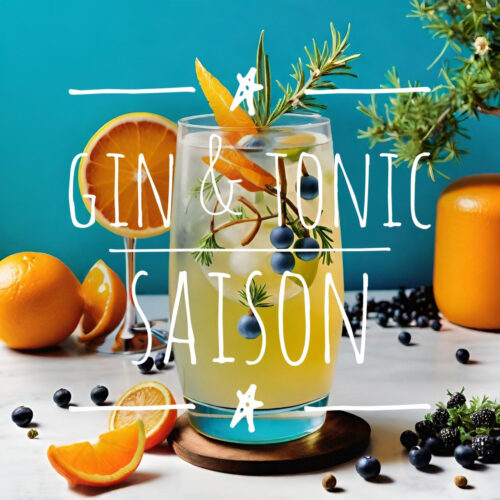saison recipe base using a Gladfield recipe as the base, and with G&T additions
10g ground coriander seeds at 5mins
1.057 og 25L in fermenter
Fermentation temp start at 22C
raise 1C each 24hrs until max of 25C, nice and easy to change remotely using the rapt temp controller.
additions of Approx 150g juniper, 16lime leaves, some lemon zest, soaked in 400ml of vodka. Add at day 7

settled to 1.001 around day 10, stayed for 48hours.
Pill battery ran out at about day 11 – last reading battery percentage was 12%. I switched the temperature controller sensor to the internal one instead of the pill, and lowered the target from 25 to 23 degrees. there is lag in the wort temp since it acts like a heat sync so the lower temp was somewhat precautionary. fermentation had well finished by then anyway. Also degassed at this point.
chilled to 5C on day 13. the allrounder fermenter had squeezed in as the head cooled and contracted. not ideal since when it equalizes it draws air in – not really any difference to the exposure to air during bottling.
very clear and not much trub. Full 23L in bottles.
ABV at least 7.5% – addition of 400ml of vodka should add nearly 0.5%…
added 120g glucose and 20g sucrose (Chelsea sugar) – i had run out of glucose.. in 200ml boiled water
nice balanced flavour, stronger juniper smell and taste than previous attempts at the G&T additions.
interesting read of an old finnish style beer using juniper https://learn.kegerator.com/sahti/
https://www.gladfieldmalt.co.nz/brewing-recipes/gladfield-saison-v2
Mash Additions:
4.00g Calcium Chloride
2.00g Calcium Sulfate
2.00g Magnesium Sulfate
4-5mL 80% Lactic Acid (for pH Adjustment – requires pH Meter)
- Heat Strike Water to achieve a Mash Temp of 67°C (~6°C above strike).
- Add minerals to Strike or Foundation water.
- Begin mashing in. Measure the mash pH (once all the grain is added) to achieve 5.2-5.5 (adjust with 1 mL additions of 88% lactic acid, if required).
- Mash at 67°C for 60 mins. Confirm no residual starches remain.
- Batch sparge with 78°C water until kettle volume is achieved (or stop runoff when the last runnings drop below 1.010 and pH rises above 5.75).
- Boil for 90 minutes adding hops and kettle finings at indicated times.
- At End Of Boil, whirlpool while chilling (immersion style) or for 10 mins, stand 15 mins or until chilled to pitching temperature.
- Transfer to fermenter at 22°C, oxygenating wort (inline or via aeration in fermenter).
- Rehydrate and pitch yeast as per manufacturer’s recommendations. Ferment at 22°C for the first 48 hours. Then raise 1 degree per day up to a final temperature of 25°C
- When within 1-2 points of predicted FG, cap the fermentation (spunding valves are great for this) and wait until gravity is stable for 48 hours before deciding to place on cooling
Fining/ Filtering (Style Tip – Saisons are traditionally unfined and filtered)
- 48-72hrs after FG is reached (i.e. Taste No Diacetyl), crash cool to 0-1°C wait for the yeast to flocculate. Do not allow the beer to chill so long that it clears completely.
- Keg or bottle condition – your choice? Aim for 2.7-2.8 volumes of CO2.

